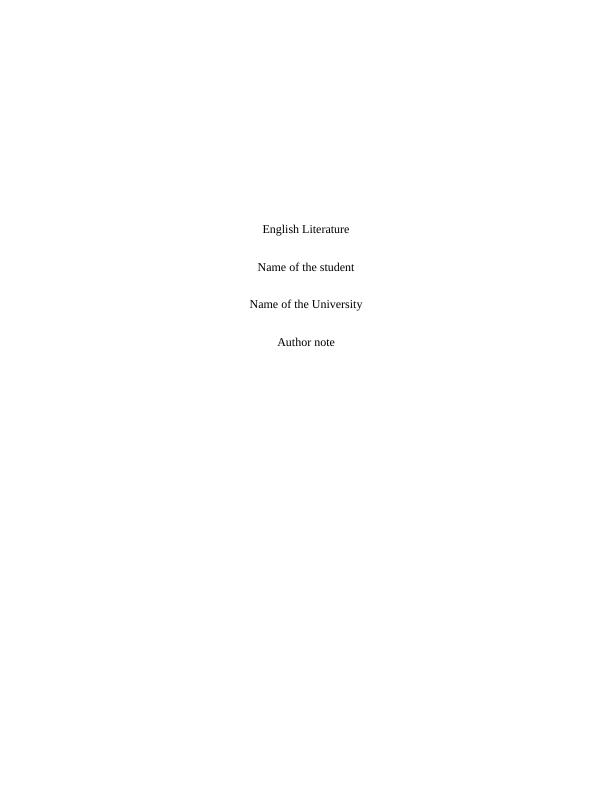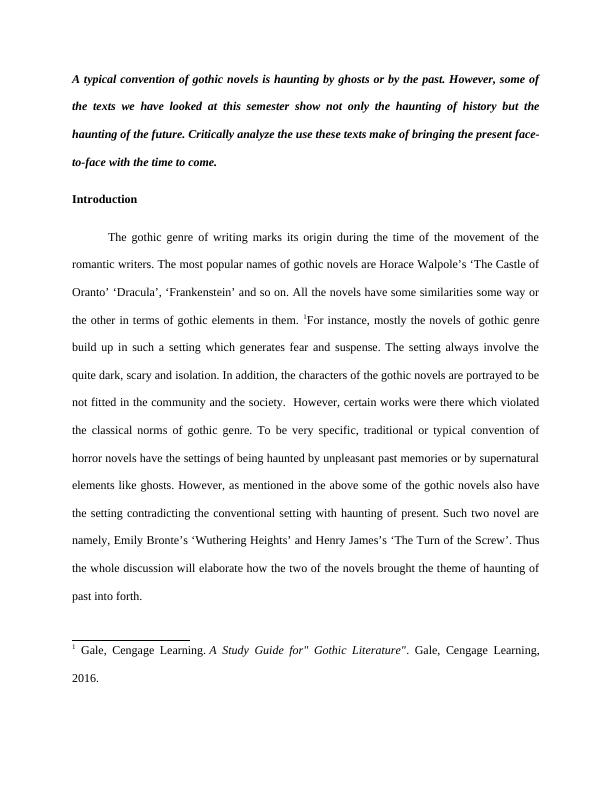Haunting of Future in Gothic Novels: A Critical Analysis of Wuthering Heights and The Turn of the Screw
Present an accurate synopsis of the reading, present the author's thesis, describe the major arguments used to support the author's thesis, use quotations accurately, provide full bibliographic details, use Chicago style referencing.
12 Pages3755 Words412 Views
Added on 2023-05-30
About This Document
This article critically analyzes the use of haunting of future in gothic novels like Wuthering Heights and The Turn of the Screw. It explores the themes of jealousy, ghosts, love, revenge and greed in these novels. The article discusses how these novels violate the traditional norms of gothic genre and create a sense of suspense and anticipation of future events. The article also discusses the characterizations of the main characters in these novels and how they contribute to the theme of haunting of future.
Haunting of Future in Gothic Novels: A Critical Analysis of Wuthering Heights and The Turn of the Screw
Present an accurate synopsis of the reading, present the author's thesis, describe the major arguments used to support the author's thesis, use quotations accurately, provide full bibliographic details, use Chicago style referencing.
Added on 2023-05-30
ShareRelated Documents
End of preview
Want to access all the pages? Upload your documents or become a member.




